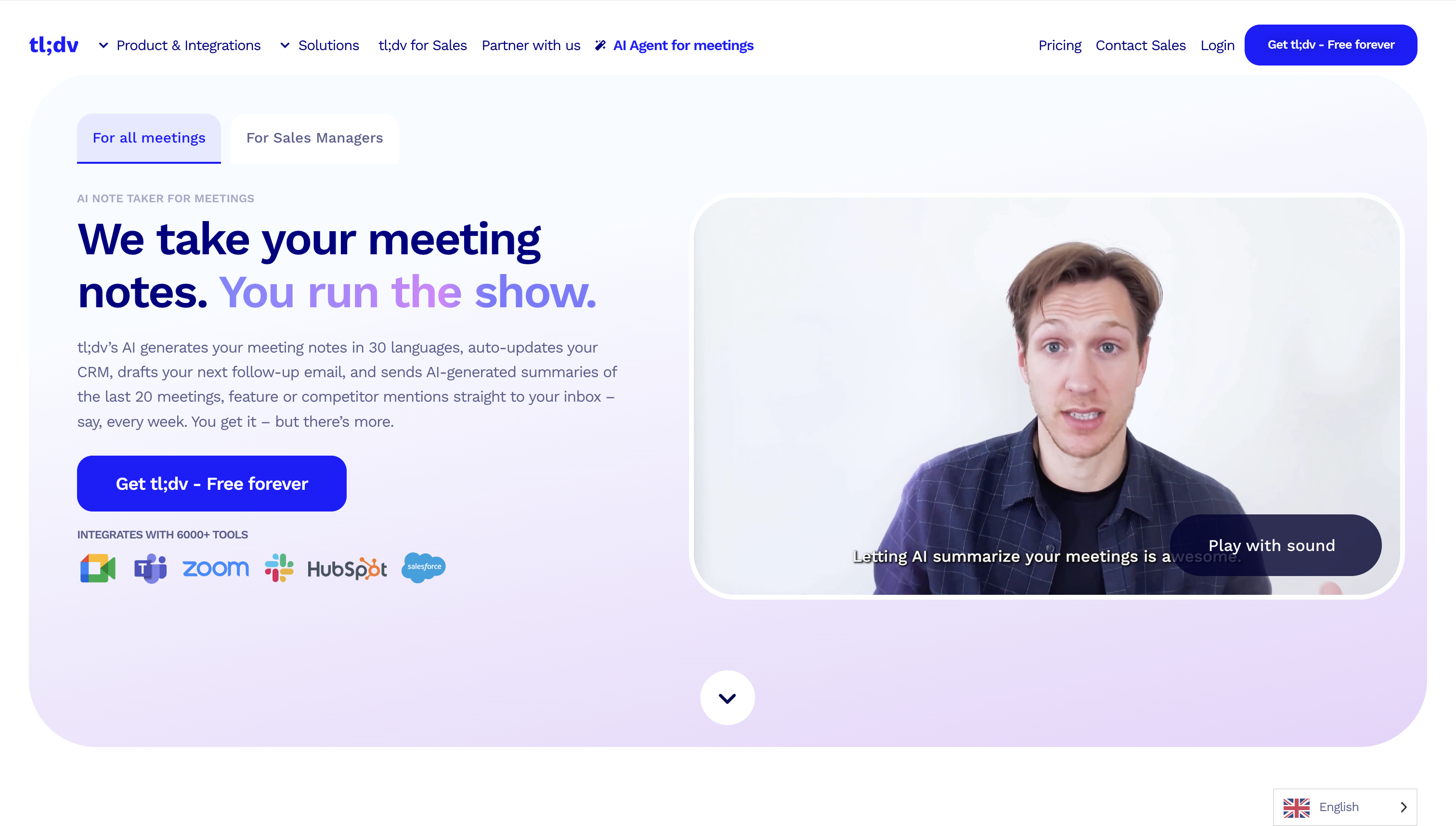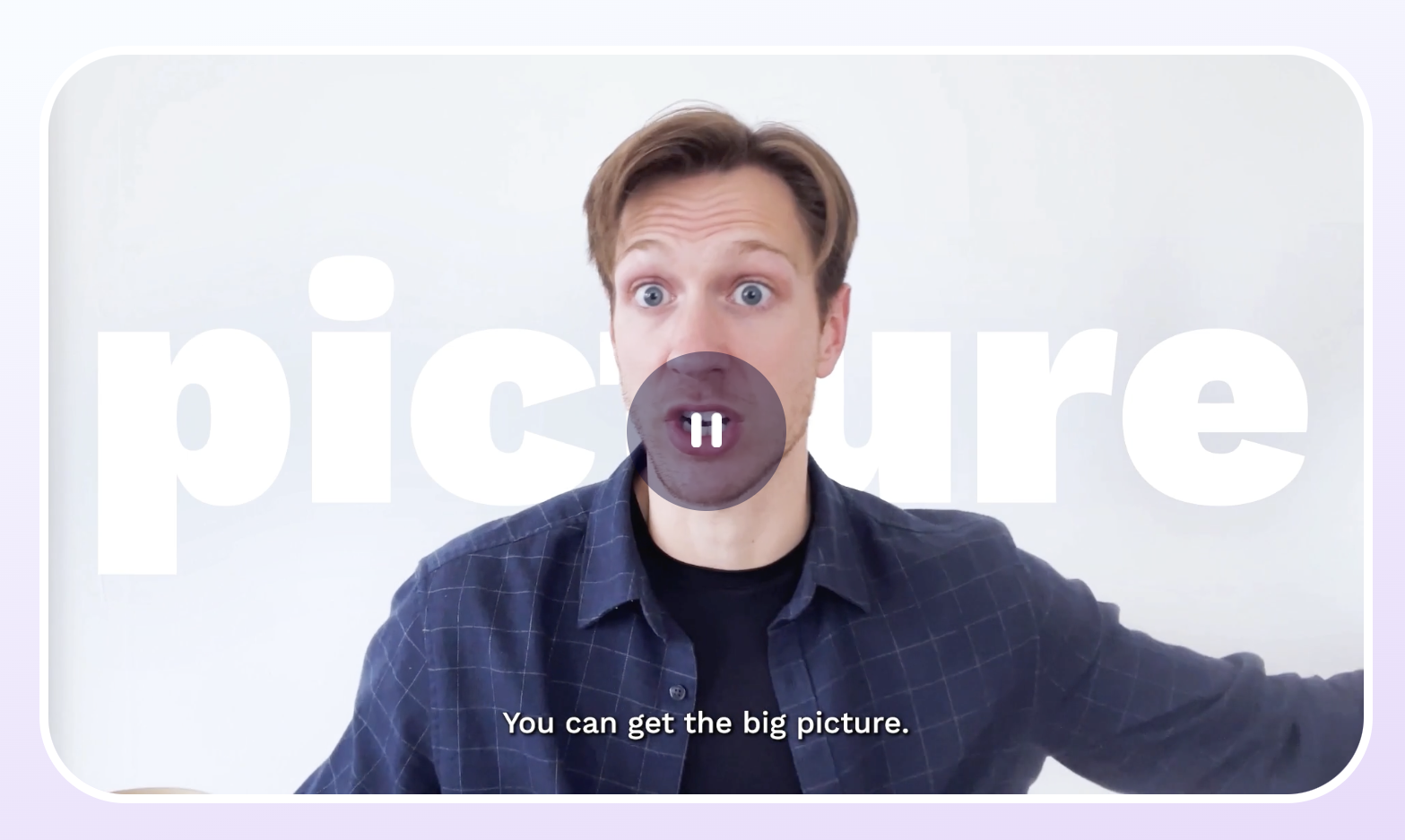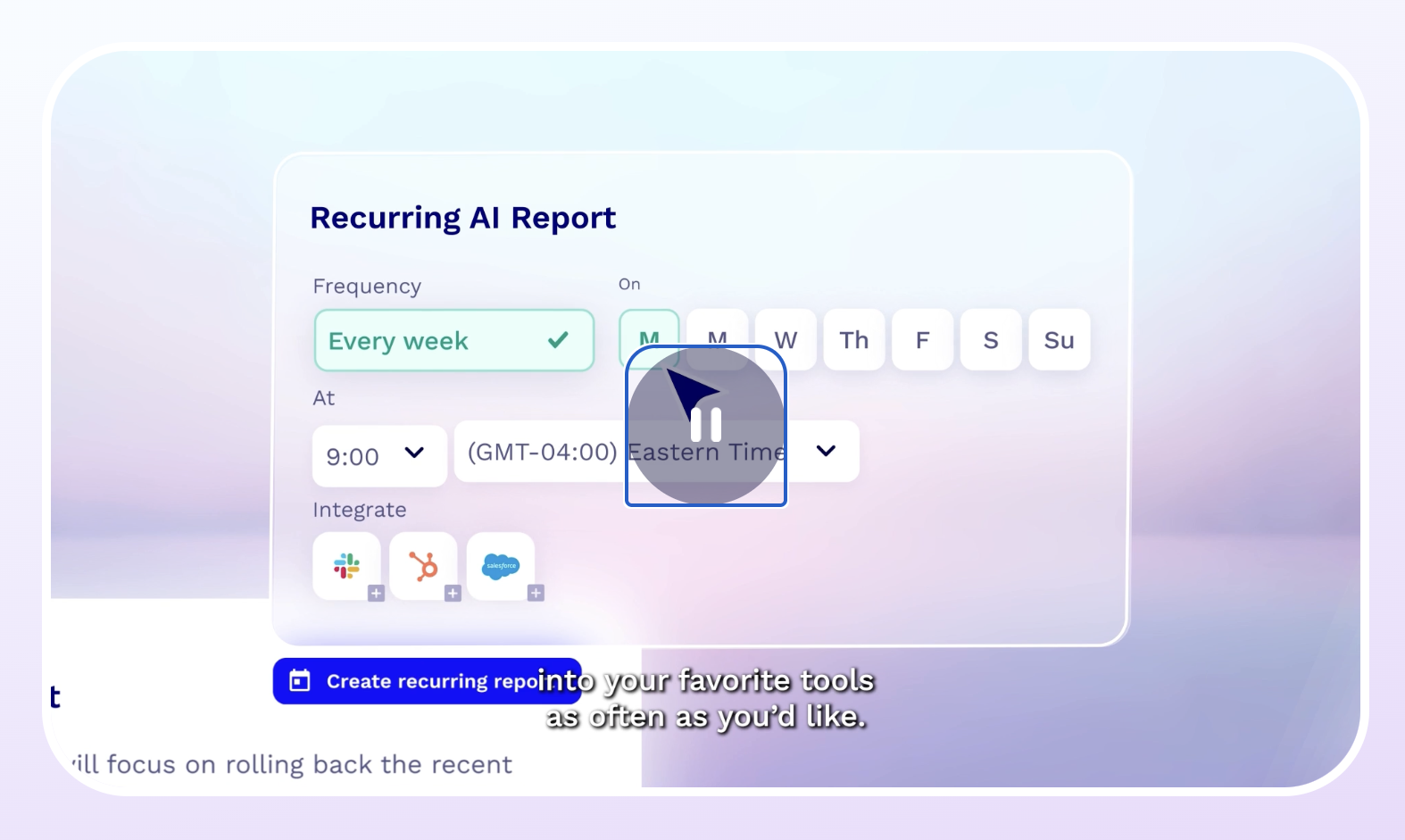
tl;dv’s hero video opens with a human face and uses “acknowledge then twist” messaging. This approach validates what the company and its competitors do (AI meeting summaries are awesome) before revealing the hidden problem they create (you still have to read them all).
The video shows the product solving this friction in context, with a conversational tone that feels like a friend showing you something cool. This works in crowded markets where buyers understand the category but need proof your solution has an edge no one else offers.
tl;dv is an AI-native platform for meeting management. Co-founded in 2020 by Allan Bettarel, Carlo Thissen, and Raphael Allstadt, tl;dv is headquartered in Aachen, Germany.
Most SaaS homepages open with a static hero. Some include a demo video or product tour. tl;dv opens with a video thumbnail showing a face. A human face, mid-conversation, looking directly at you.
That alone is rare. But what happens next is even better.
The video starts with casual acknowledgment:
“Okay, sure. Letting AI summarize your meetings is awesome.”
This isn’t a competitor callout. It’s not defensive. It’s almost dismissive in how casual it sounds, like, yeah, of course we do that basic thing every AI meeting tool does. No big deal.
Then comes the twist.
“You don’t have to do anything. But you kinda do.”
They just validated the standard value prop, then immediately introduced the friction no one talks about: you still have to read all those summaries. They’re not selling you on AI meeting notes. They’re solving the problem AI meeting notes create.
The video continues showing the product in context: not just screenshots, but the actual interface solving the actual problem. And the person on the screen? They’re gesturing, pausing, making eye contact. The montage cuts between them talking and UI clips, keeping it visually dynamic and staying human.




The tone throughout is conversational, almost like a friend showing you something cool:
Starting with a human face triggers immediate attention. We’re wired to look at faces. But the script structure is what keeps you watching.
The “acknowledge then twist” narrative does something smart: it positions tl;dv’s basic features as table stakes, then uses competitor solutions as the setup for their differentiation.
Most companies say, “We’re better because X.” tl;dv says, “Everyone does X, which creates problem Y, which we solve with Z.”
This works because tl;dv operates in a crowded market. AI meeting tools exist. Buyers know what they do. The question isn’t, “Should I use an AI meeting tool?” It’s, “Which one actually solves my problem?”
By starting the video with “Yeah, AI summaries are cool,” they skip the category education buyers already have. Then they introduce the pain point buyers experience but haven’t articulated: summary overload.
This video shows this problem visually (a montage of multiple meeting windows, stacks of summaries) before showing how tl;dv’s search and reporting features solve it. Product in context, not in isolation.
The human presence throughout, not just at the start, keeps it relatable. This isn’t a polished commercial. It’s someone showing you their product and genuinely hoping you like it.
